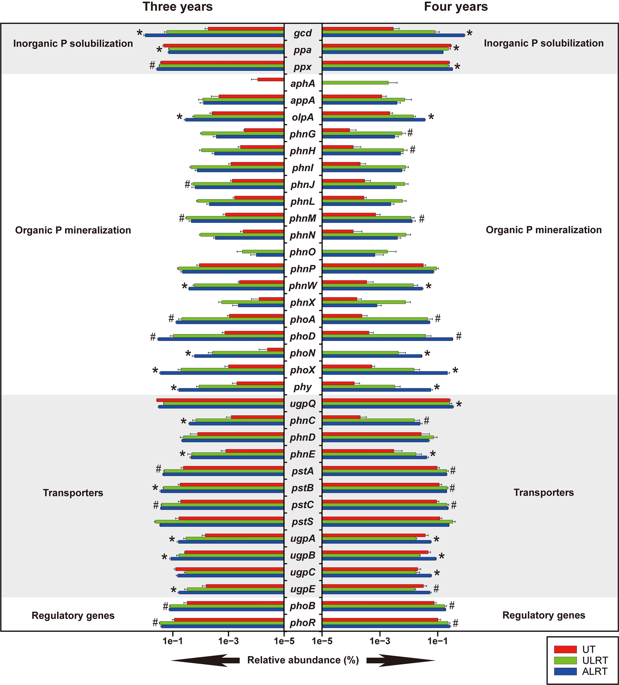Our official English website, www.x-mol.net, welcomes your
feedback! (Note: you will need to create a separate account there.)
Novel phosphate-solubilizing bacteria enhance soil phosphorus cycling following ecological restoration of land degraded by mining.
The ISME Journal ( IF 10.8 ) Pub Date : 2020-03-23 , DOI: 10.1038/s41396-020-0632-4 Jie-Liang Liang 1 , Jun Liu 2 , Pu Jia 1 , Tao-Tao Yang 2 , Qing-Wei Zeng 2 , Sheng-Chang Zhang 2 , Bin Liao 2 , Wen-Sheng Shu 1 , Jin-Tian Li 1, 2
The ISME Journal ( IF 10.8 ) Pub Date : 2020-03-23 , DOI: 10.1038/s41396-020-0632-4 Jie-Liang Liang 1 , Jun Liu 2 , Pu Jia 1 , Tao-Tao Yang 2 , Qing-Wei Zeng 2 , Sheng-Chang Zhang 2 , Bin Liao 2 , Wen-Sheng Shu 1 , Jin-Tian Li 1, 2
Affiliation

|
Little is known about the changes in soil microbial phosphorus (P) cycling potential during terrestrial ecosystem management and restoration, although much research aims to enhance soil P cycling. Here, we used metagenomic sequencing to analyse 18 soil microbial communities at a P-deficient degraded mine site in southern China where ecological restoration was implemented using two soil ameliorants and eight plant species. Our results show that the relative abundances of key genes governing soil microbial P-cycling potential were higher at the restored site than at the unrestored site, indicating enhancement of soil P cycling following restoration. The gcd gene, encoding an enzyme that mediates inorganic P solubilization, was predominant across soil samples and was a major determinant of bioavailable soil P. We reconstructed 39 near-complete bacterial genomes harboring gcd, which represented diverse novel phosphate-solubilizing microbial taxa. Strong correlations were found between the relative abundance of these genomes and bioavailable soil P, suggesting their contributions to the enhancement of soil P cycling. Moreover, 84 mobile genetic elements were detected in the scaffolds containing gcd in the 39 genomes, providing evidence for the role of phage-related horizontal gene transfer in assisting soil microbes to acquire new metabolic potential related to P cycling.
更新日期:2020-03-23































 京公网安备 11010802027423号
京公网安备 11010802027423号